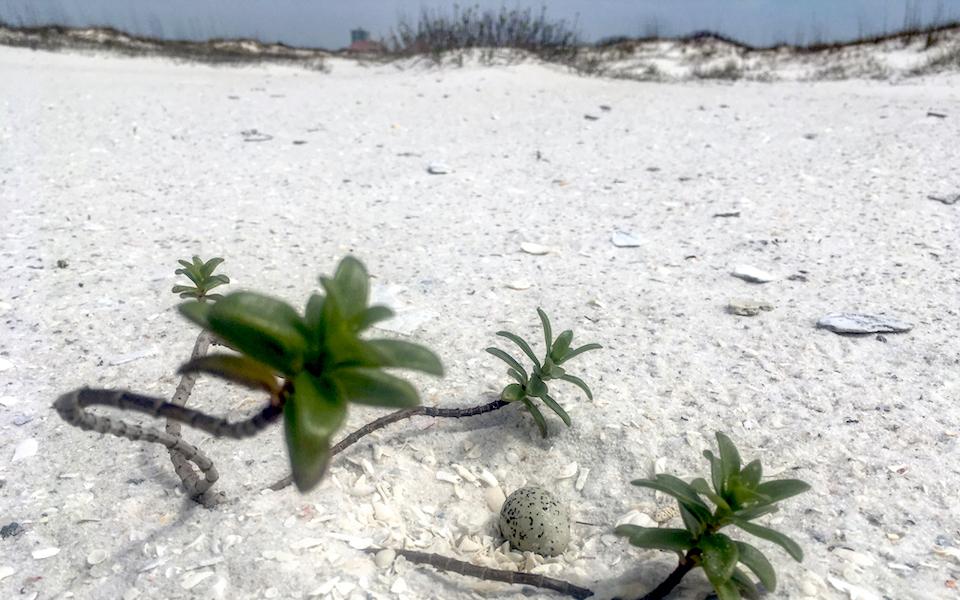
A small white egg with black spots sits on a white sand beach/NPS
The arrival of nesting shorebirds at Gulf Islands National Seashore on the Gulf of Mexico has prompted park staff to urge visitors to drive slowly and watch out for the birds and their chicks.
Visitors to the seashore can show their support for shorebird chicks and help remind others to slow down to 25 mph by proudly displaying the Gulf Islands Chick Magnet. Beginning Thursday, March 12, visitors may pick up pick up their free chick magnet at the Fort Pickens & Perdido Key Entrance Stations, Fort Pickens Discovery Center, and park headquarters at Naval Live Oaks Area.
Each year, beginning in February and March and ending in late summer, the seashore provides critical habitat for several species of ground nesting shorebirds including least terns, snowy plovers, Wilson’s plovers, and black skimmers. Least terns come from as far away as Central and South America to raise their young on these beaches.
Adult birds and their tiny chicks are sometimes struck by vehicles as they look for food near roadways. By observing posted speed limits and watching carefully for birds flying across or feeding along the roadway, you can help to protect the nesting colonies.
To decrease the number of roadkills, posted speed limits along Highway 399 will be temporarily reduced to 25 mph in the next month. The reduced speed limit is just one element of the park’s efforts to reduce speeding including speed bumps and enhanced enforcement along the roadway. By September, nesting is complete and normal use of the roads will resume.
Human intrusion into the nesting closures causes birds to take flight, leaving their nests vulnerable to heat and predators. Adult birds will often dive at intruders in an effort to drive them away from the colony. Alarmed birds may then fly low across the road and into the paths of oncoming vehicles. Bicyclists, walkers, and joggers are encouraged to be aware of bird behaviors along the roadways near posted nesting areas.
“With the help of our community and those who enjoy the national seashore every day, we can ensure these nesting shorebirds have the best opportunity to welcome and fledge their next generation,” said Superintendent Dan Brown.
Park staff will monitor beaches for nesting activity and close areas as needed.
Closed areas represent a very small percentage of the seashore and park officials request that visitors divert activities to other areas. If visitors find themselves besieged by birds, it means that you are near an unmarked nesting area or young chicks. Please leave the area by back-tracking your steps - the eggs are very small, well camouflaged, and hard to see.

 Support Essential Coverage of Essential Places
Support Essential Coverage of Essential Places







Comments
Great story, we camped at Ft Pickens the first week of February 2020 and we saw some of the birds flying around the beaches. Drive slow and save the birds. I wish I had gotten the Gulf Island Chick Magnet when I got my National Park Geek hat pin.
Great campground and lots of beaches to explore.